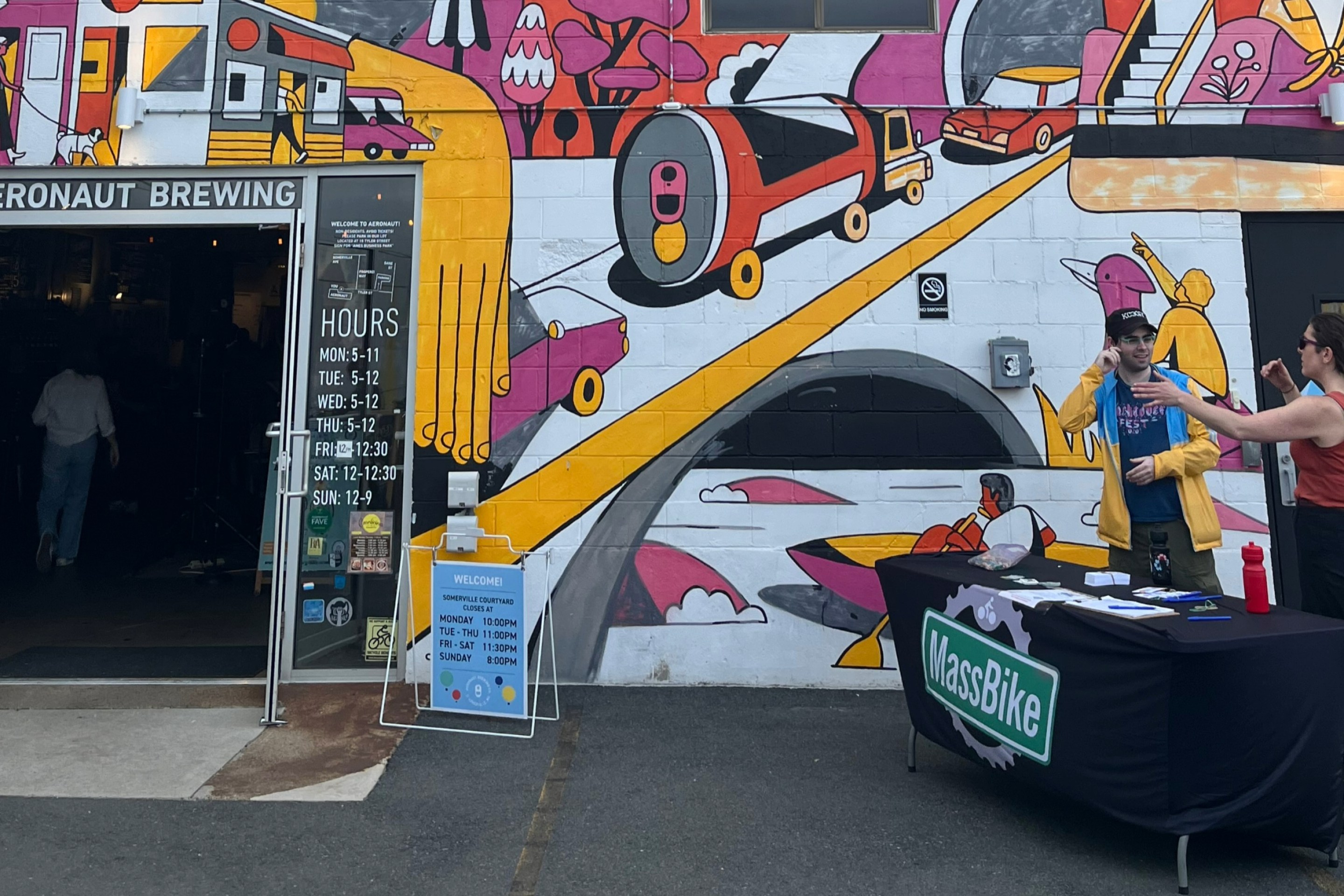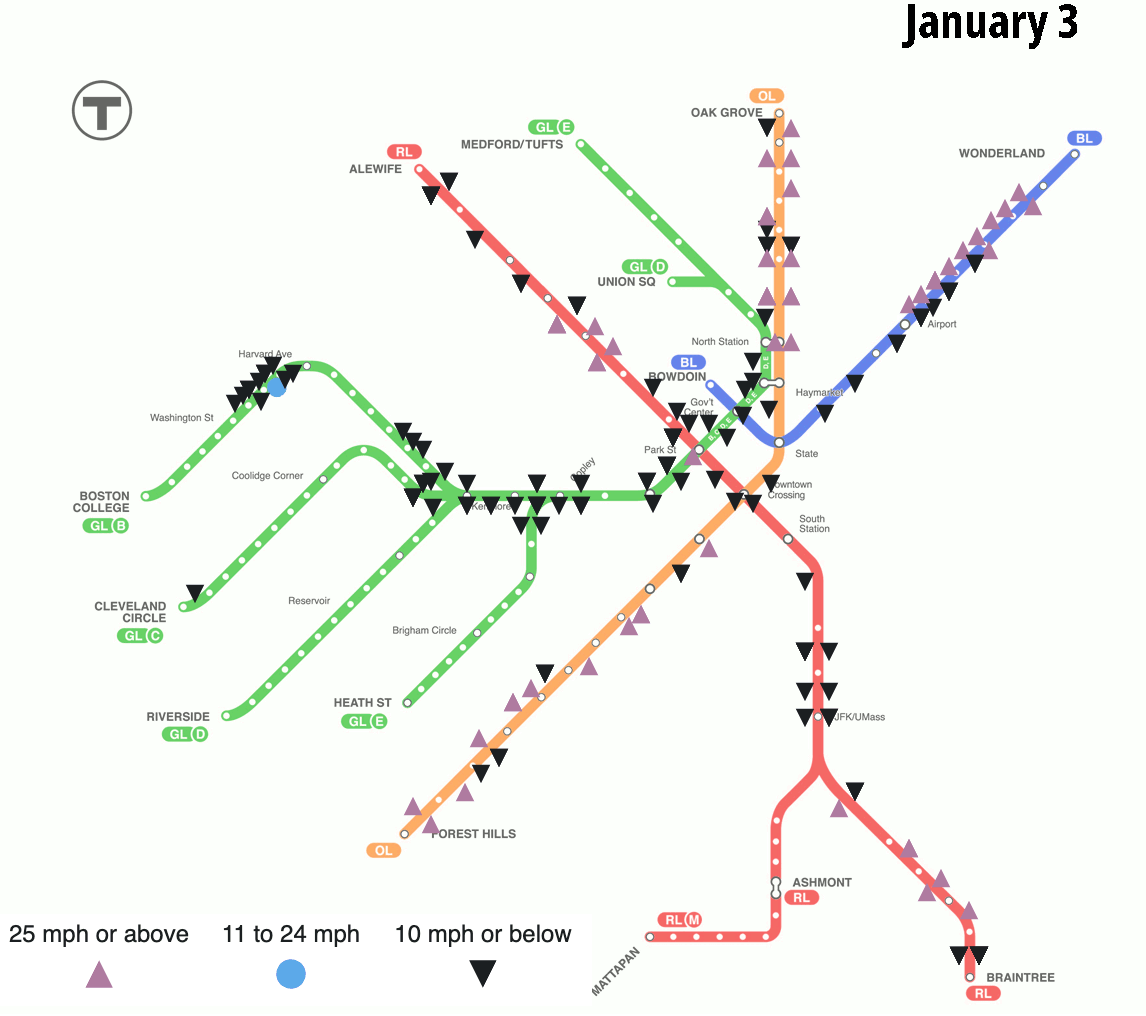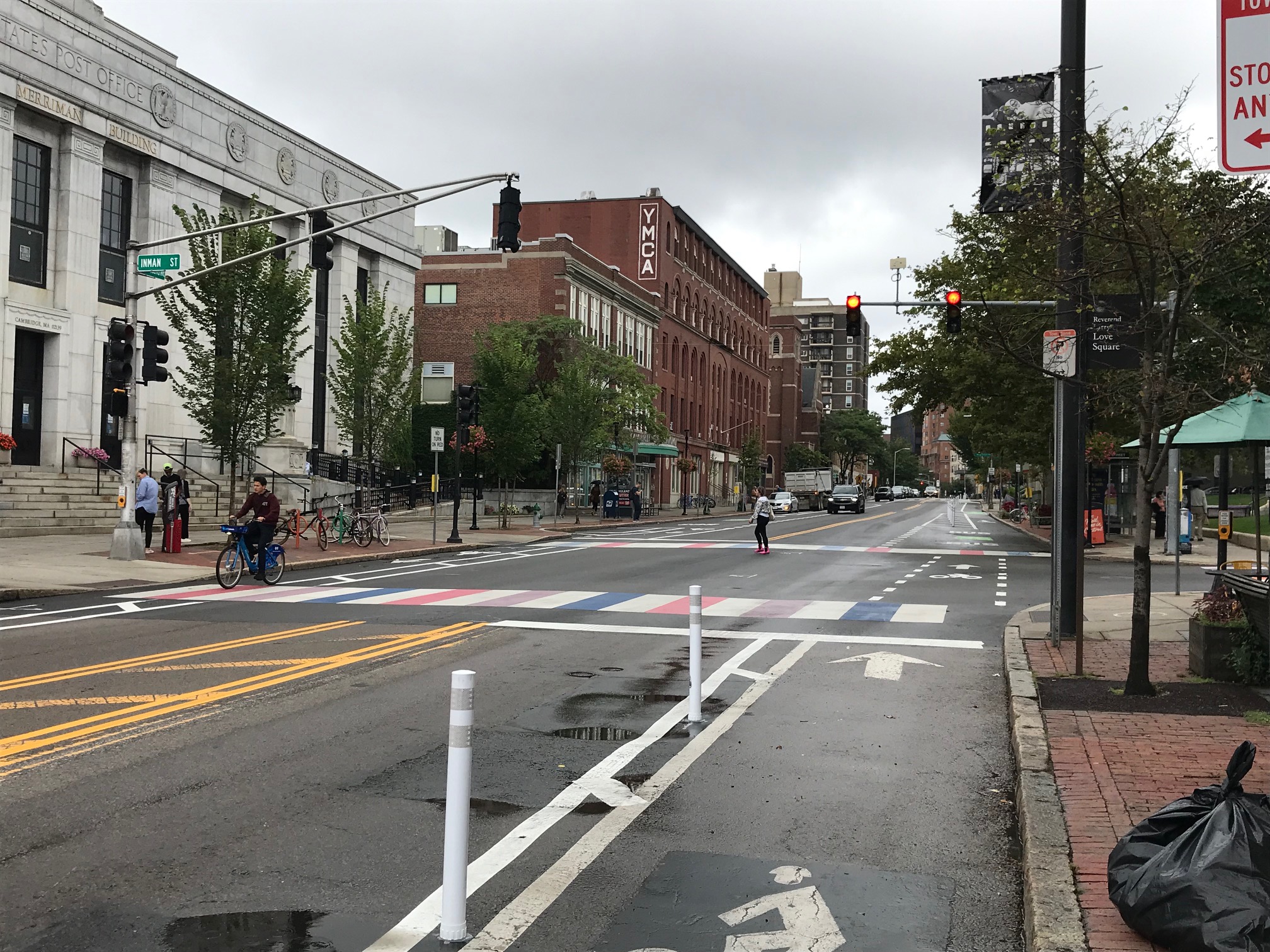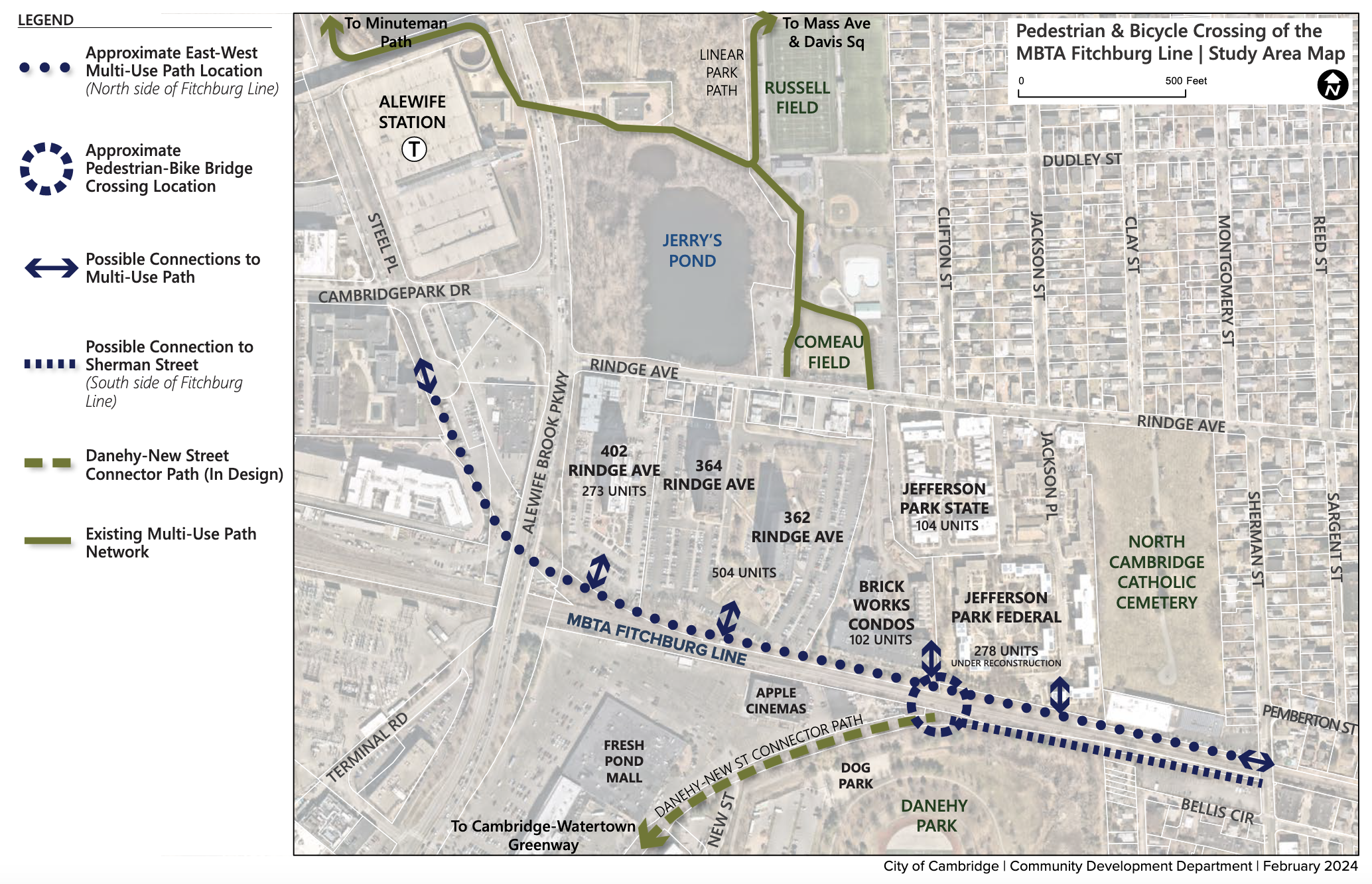MassDOT Picks ‘At-Grade’ Option for Allston/I-90 Project
6:10 PM EDT on September 29, 2021

A bicyclist rides along the Paul Dudley White Path along Soldiers Field Road and the Massachusetts Turnpike viaduct on Sept. 11, 2019.
The aging highway viaduct that hulks over the riverbank of the Charles near Boston's Packards Corner neighborhood is coming down - and it won't be replaced.
MassDOT officials announced Wednesday evening that they would pursue an "at grade" design for a planned reconstruction of the Massachusetts Turnpike through Allston later this decade.
The decision marks a critical milestone for the state's massive Allston Multimodal Project, which has been in planning since 2013.
The viaduct runs through what planners call “the throat,” the project's most technically challenging and contentious section: it's an area of the Charles River waterfront where the Turnpike, Soldiers Field Road, and two commuter rail tracks squeeze through a choke point that’s just over 210 feet wide.
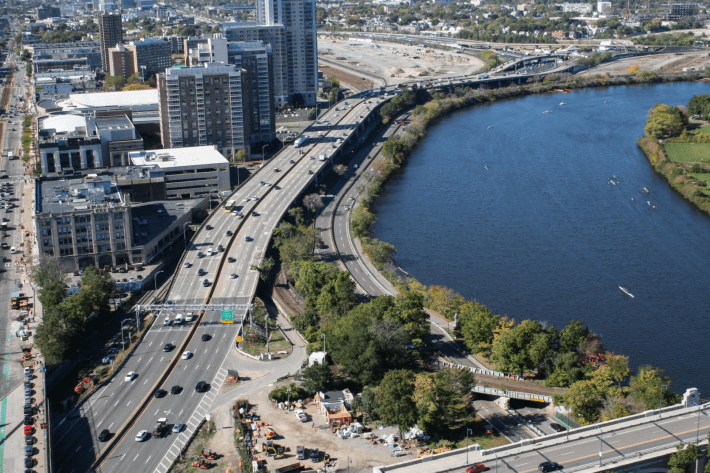
Until now, MassDOT had been considering two options for the throat: one possibility would have essentially re-built the existing Turnpike viaduct in place; while the other alternative – the “modified all at-grade” option – would have narrowed the footprints of the highways to fit the project at ground-level.
In 2020, under the leadership of former MassDOT Secretary Stephanie Pollack, MassDOT published documents that attempted to make the case for the viaduct option, and Pollack and and other MassDOT officials publicly expressed skepticism against the “at-grade” design.
But in a formal public commenting period last fall, a broad coalition of advocacy groups and prominent elected officials, including Congresswoman Ayanna Pressley, Senator Ed Markey, former Mayor Marty Walsh, and dozens of state legislators, called on MassDOT to tear down the viaduct and support the at-grade option.
In November, Pollack acknowledged that there was "strong public support for the removal of the viaduct," and announced that the agency would postpone a formal decision until 2021.
MassDOT announced their decision to embrace the at-grade design during a virtual meeting of the project's advisory task force on Wednesday evening.
MassDOT officials also shared sketches of the updated at-grade plans that showed a wider, 20-foot-wide boardwalk for the Paul Dudley White path, which would be suspended on a boardwalk over the river through the "throat" section. A restored riverbank would provide a buffer between the highway and the river.
Renderings also illustrated a new bike and pedestrian bridge spanning the highways to connect the restored riverbank and its waterfront paths to Agganis Way and the Boston University Campus:
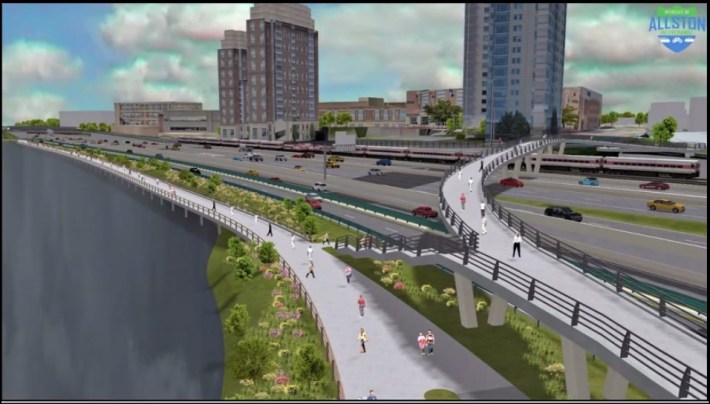
Task force members and elected officials attending Wednesday's meeting expressed gratitude to MassDOT for selecting their preferred design option.
The Boston-based business organization A Better City had been among the most vocal advocates for the at-grade design, and on Wednesday, its CEO, Rick Dimino, issued a press statement to hail MassDOT's decision as "a critical step toward improving the mobility, environmental justice, and economic competitiveness of our region."
Dimino added that the project was "a once-in-a-generation opportunity to restitch our urban fabric and create a Western Gateway worthy of a great city.”
Galen Mook, the executive director of MassBike and an Allston resident who's been serving on the project's advisory task force, also expressed gratitude "for the extended public process that got us to this point, which shows MassDOT and the administration are actually listening to the stakeholders."
But while the project's most contentious element appears to be settled, Mook warned that "lots more needs to be figured out" on the details of the broader Allston Multimodal project, which will also build a new "West Station" transit hub, new bike and pedestrian trail connections over the highways to the Charles River waterfront, and a grid of new neighborhood streets to serve future development on land owned by Harvard University.
The existing Turnpike viaduct through Allston dates to the 1960s, and its structural elements exhibit extensive signs of corrosion and deterioration.
Earlier this year, MassDOT announced that it would spend $75 million just to keep the viaduct standing a few more years while final design for the Allston Multimodal Project continues.
Read More:
Stay in touch
Sign up for our free newsletter
